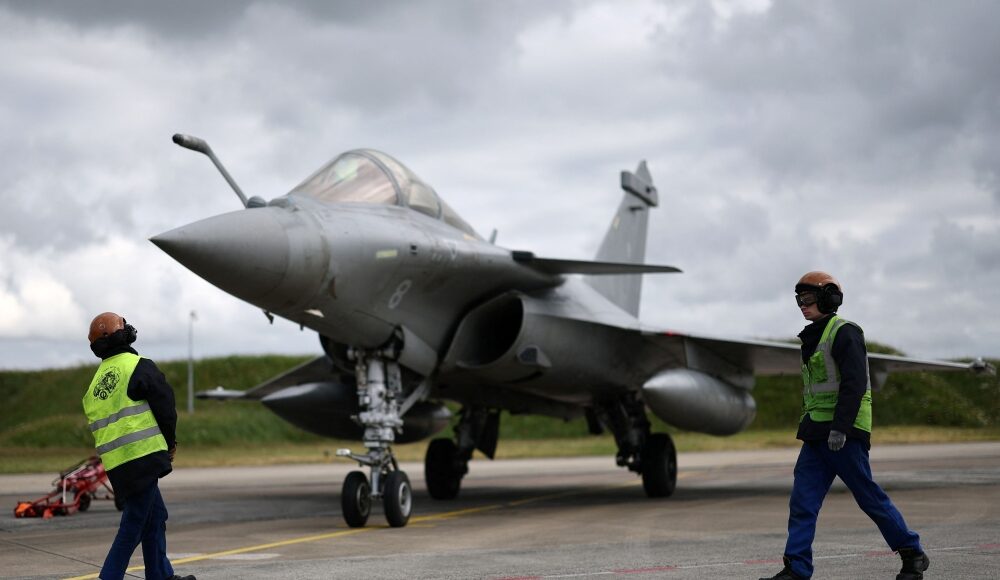MAY 12 — In the volatile skies above South Asia, a silent tremor has shaken the self-assurance of one of the world’s largest democracies.
India’s acquisition of 36 Rafale fighter jets from France between 2020 and 2022, at a staggering cost of approximately US$8.7 to 9.4 billion, was widely celebrated as a game-changer. These 4.5-generation multirole fighters were touted as the crown jewels of the Indian Air Force (IAF), symbolising India’s growing strategic autonomy and technological ascendancy. Today, however, that symbolism is under scrutiny.
If it is confirmed that a Rafale was either downed or deterred by Pakistan’s Chinese-supplied J-10C fighters or by an integrated radar and missile system orchestrated with Chinese support, the implications go far beyond a single aerial skirmish. They signal a perceptual rupture in the global military order and a quiet but seismic shift of aerospace credibility from West to East.
The Rafale, armed with Meteor beyond-visual-range missiles and equipped with state-of-the-art Thales AESA radars, was meant to provide India with air dominance not just over Pakistan but across a broader regional arc. Yet this promise now hangs precariously.
If Pakistan, with China’s assistance, has developed the capacity to detect, target, and neutralise such an advanced platform, then New Delhi must confront a strategic dilemma. Publicly, it cannot acknowledge a loss that would undermine its defence narrative and electoral confidence. Privately, it must now recalibrate doctrines that rested on presumed air superiority.
The Indian military establishment faces a sobering reassessment of whether platform-centric dominance, once assured by Western-made jets, remains viable in the age of digitally integrated and networked warfare systems.
China’s J-10C fighters, once dismissed in Western circles as inferior replicas of American or Russian models, now appear to have leapfrogged those perceptions.
Paired with PL-15 long-range missiles — reaching up to 300 kilometres — and backed by the KJ-500 early warning aircraft and layered radar coverage, the People’s Liberation Army Air Force (PLAAF) has constructed a battlespace that no longer resembles mere catch-up mimicry. It reflects a sophisticated doctrinal evolution aimed not just at parity but at control.
This subtle ascendancy is playing out through Pakistan, China’s closest strategic partner, allowing Beijing to shape South Asia’s aerial balance without deploying its own assets directly.
This development is not merely a challenge for India. It reverberates across the Global South, especially in regions caught between choosing Western or Eastern defence ecosystems. The illusion that Western systems are inherently superior and untouchable is being quietly dismantled. Many countries — especially in Africa, Latin America, and Southeast Asia — have long weighed affordability against combat credibility when considering Chinese systems.
If those systems are now seen to outperform, or even rival, platforms like the Rafale, then the decision matrix shifts. China’s arms diplomacy, long shadowed by accusations of quality deficiency, may be entering a new era — one where performance, not pedigree, dictates preference.
A French fighter aircrafts Rafale M, manufactured by Dassault Aviaition, stands on the tarmac before a practice session for a simulated landing on an aircraft carrier at the Landivisiau Navy Air Base (BAN Landivisiau) in Saint-Servais, Brittany, France, May 7, 2025. — Reuters pic
The implications for Southeast Asia are especially acute.
Asean member states — Vietnam, Indonesia, Malaysia, the Philippines — operate a mixture of Western, Russian, and increasingly, Chinese hardware.
For years, the strategic logic was to hedge between great powers while maintaining technical independence. That equation is now unstable.
The sky over South Asia has revealed not only a shift in firepower but in psychological warfare. If India’s most advanced fighter can be neutralised, then Asean nations must question whether their own ageing fleets are prepared for similar confrontations.
The region’s defensive complacency, once hidden behind multilateralism and the language of neutrality, is being exposed by the raw arithmetic of technological evolution.
Moreover, Asean’s reliance on tactical ambiguity as a form of security strategy is looking dangerously outdated.
As China refines its doctrine and Pakistan internalises it, a new operational standard is being set — one that favours real-time data fusion, electronic warfare, and long-range kill zones over the traditional metrics of pilot skill and airframe durability.
The Rafale’s apparent vulnerability, whether fully downed or simply repelled, reinforces this changing paradigm. Southeast Asian defence planners will now be forced to prioritise joint surveillance, regional radar integration, and digital interoperability over symbolic hardware acquisitions.
India’s political establishment, meanwhile, finds itself in an awkward position.
The Rafale deal was as much about prestige as it was about deterrence. Prime Minister Narendra Modi personally championed the acquisition as a signal of India’s global ascent.
Any dent to that narrative — especially if inflicted by Pakistani jets backed by Chinese systems — undermines more than military policy. It undercuts the ideological scaffolding of India’s self-image as a rising power.
With Pakistan emboldened and China proving its military-industrial maturity through proxy performance, the regional chessboard has been reconfigured without a formal declaration of checkmate.
What we are witnessing is not the end of Western airpower, but the end of its automatic supremacy.
This is not a matter of technological obsolescence but of strategic adaptation. China has shown that it no longer needs to match the West plane for plane, missile for missile. Instead, it can field systems that work in tandem, operate on disruptive logic, and undermine the confidence of adversaries before a single shot is fired. It is an approach that values effectiveness over exhibition. And in doing so, it is tilting the strategic sky eastward, quietly and relentlessly.
The Rafale incident — confirmed or not — serves as a metaphor for a deeper transformation. The battle for air superiority is no longer about who flies higher or faster, but who sees first, connects faster, and strikes from further away. That China has achieved this through its partnership with Pakistan marks the success of a long-term, calculated strategy. The sky has not only tilted — it has realigned, and with it, so has the global perception of power.
*Phar Kim Beng is a professor of Asean Studies in the International Islamic University Malaysia (IIUM)
** This is the personal opinion of the writer or publication and does not necessarily represent the views of Malay Mail.





